
In partnership with Life Terra
- Sustainable Planet -
- 9mins -
- 207 views
The right tree in the right place: Life Terra’s top 10 most planted trees in 2021
In the past 18 months, BrightVibes’ partner Life Terra has organised events in 9 European countries, involving more than 1,900 citizens and planting more than 121 different species, of which we present their Top 10.
The right tree in the right place
BrightVibes’ valued partner Life Terra is proud to be more than ‘just another’ tree planting initiative. They firmly believe in an accurate and analysed tree species selection for more effective land restoration and greater ecosystem resilience.
At Life Terra, they work from an “ecosystem-based approach” meaning that we consider all land conditions and its surrounding area to ensure the correct restoration of the terrain through reforestation. They work hand-in-hand with the landowner, the nursery and local authorities throughout the whole process of planting design and planning to ensure the correct selection of tree species.
The past 18 months, Life Terra has organised events in 9 European countries, involving more than 1,900 citizens and planting more than 121 different species. Curious? Scroll down to discover the top 10 most planted tree species!
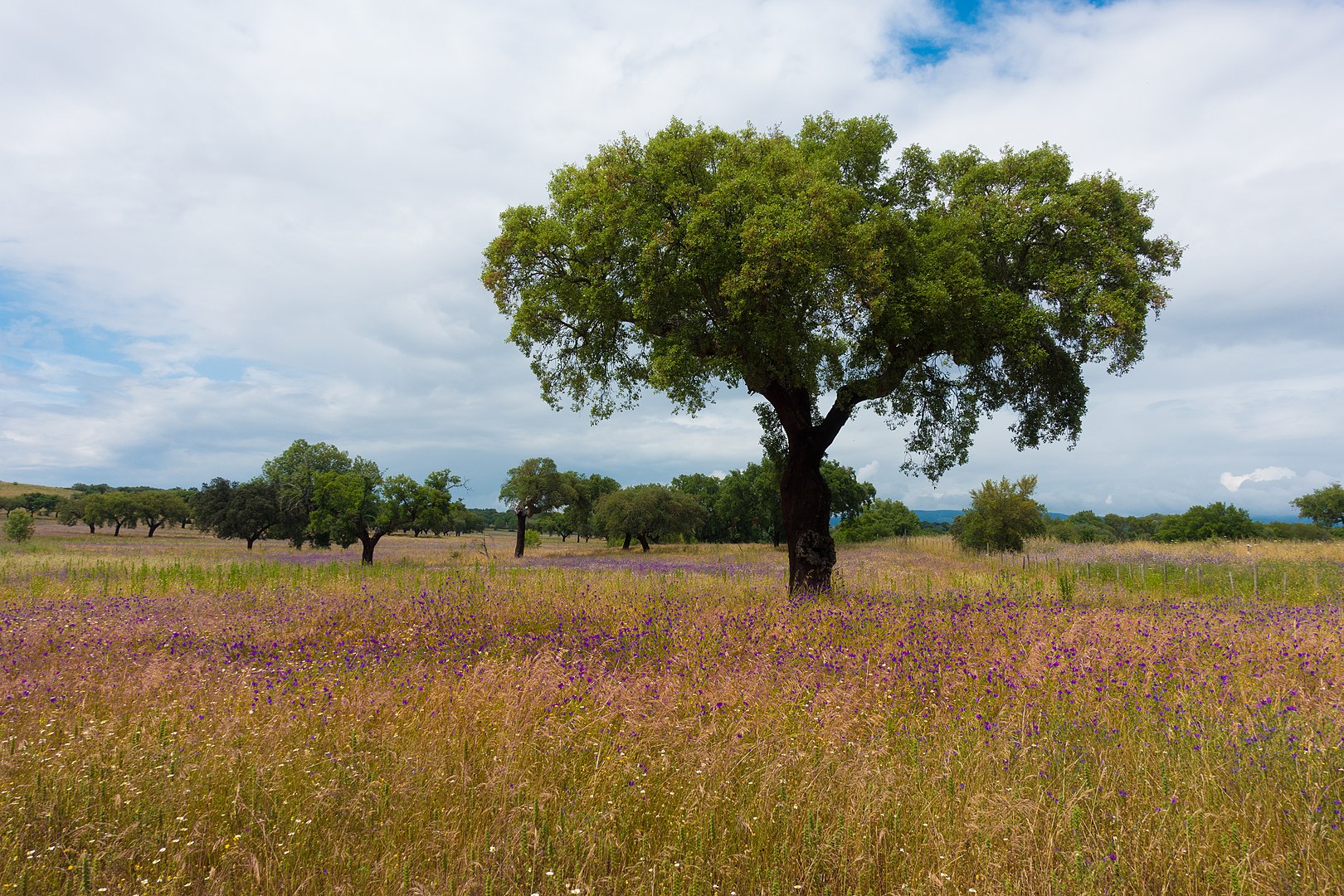
1. Cork oak – (Quercus suber). Cork oak – (Quercus suber) Life Terra’s most planted tree is the Cork oak, a native tree to southwest Europe and northwest Africa. Source: Kent Wang from London, United Kingdom – Cork oak, CC BY-SA 2.0
1. Cork oak – (Quercus suber)
Life Terra’s most planted tree is the Cork oak (Quercus suber), a native tree to southwest Europe and northwest Africa. We can find it in much of the Mediterranean region, especially in the western region. It is a tree that can grow up to 25 meters, with evergreen leaves with a dark green color above and paler below.
The Cork oak doesn’t like cold climates, thus it was mainly used for our plantings in Spain and Portugal. It is a highly valued species for its different uses. From its bark, cork is extracted to make wine stoppers or even shoes and ornamental objects.
Moreover, these large trees are chosen as nesting sites by some of the most emblematic birds of the Iberian geography, such as the imperial eagle or the black vulture; and their fruits offer an important source of food for numerous animals, such as pigs or common cranes.
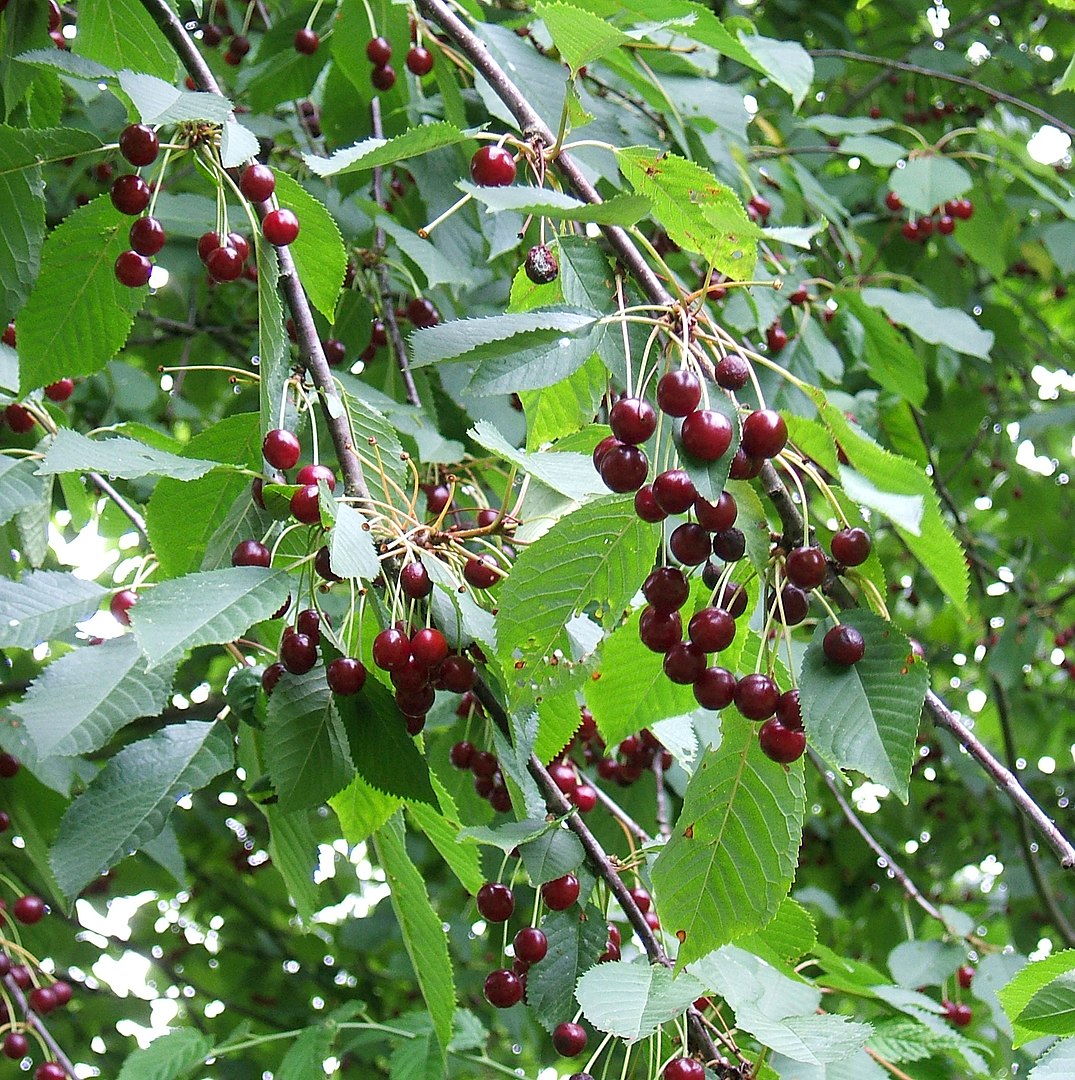
2. Wild cherry – (Prunus avium) Wild cherry trees have long, rounded leaves with a serrated edge and a smooth, grey bark. Wild cherries were already widely cultivated by the ancient Greeks and Romans. Source: By MPF – Own work, CC BY 2.5
2. Wild cherry – (Prunus avium)
The Wild cherry (Prunus avium) naturally occurs almost in all Europe, Western Asia and North Africa. It is a deciduous tree, and it prefers humid forests, in ravines and valleys. The wild cherry becomes easily established in the wild, thus its rapid expansion in different regions.
You probably have already admired its magnificent white blossoms numerous times. Wild cherry trees’ have long, rounded leaves with a serrated edge and a smooth, grey bark. Wild cherries were already widely cultivated by the ancient Greeks and Romans. Any guess as to why? Of course, due to their cherry fruit! Wild cherries are ripe from late spring until summer and a delicacy for animals and humans alike.

3. European larch – (Larix decidua europaea) In autumn its needles turn from green to yellow, before it loses them and in that way endures the snowy winters. The wood of the European larch is very versatile and used to build wooden mountain houses, floors and outdoor furniture. Source: Flickr/Peter O’Connor aka anemoneprojectors/Creative Commons Attribution-Share Alike 2.0 Generic
3. European larch – (Larix decidua europaea)
The European larch (Larix decidua europaea) is a tree of the mountains. It grows mostly in the alpine environment of central and eastern Europe and is the only deciduous conifer in Europe. In autumn its needles turn from green to yellow, before it loses them and in that way endures the snowy winters.
The wood of the European larch is very versatile and used to build wooden mountain houses, floors and outdoor furniture. Another product that is produced from European larch wood is the ‘Alphorn’. If you have ever been on vacation in the Alps, you might have seen this 3-4 metre horn with a curved end, placed a little lonesome on top of some mountain. Nowadays, mainly used as an instrument, Alphorns used to serve as a tool for communication with villages in neighbouring valleys.
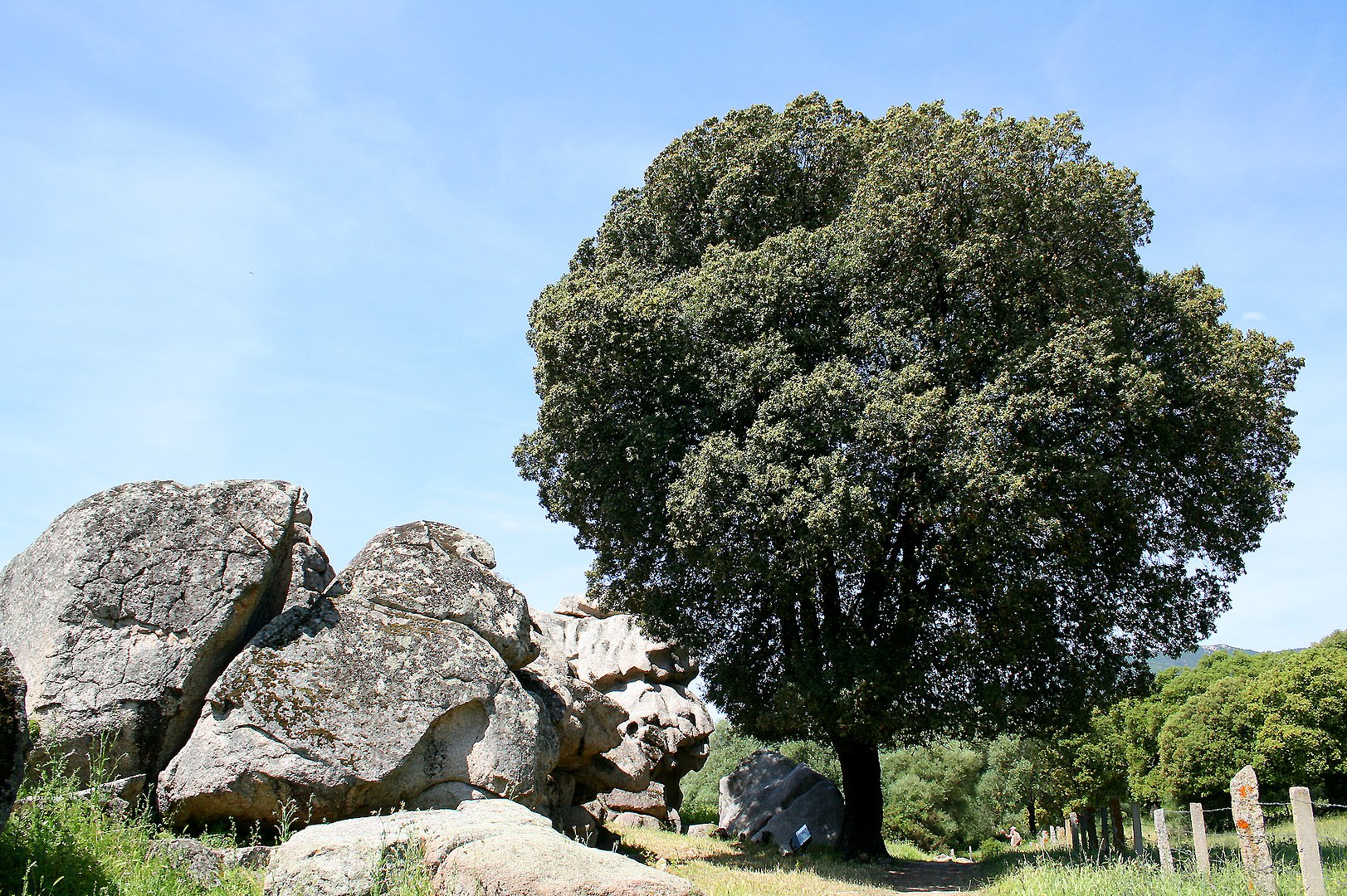
4. Holm oak – (Quercus ilex) It enjoys traditional importance in European culture due to its many utilities. They are capable of growing in all types of soils, with a preference for moist soils and areas with little or no shade. Source: By Jean-Pol GRANDMONT – Own work, CC BY 3.0,
4. Holm oak – (Quercus ilex)
The Holm oak (Quercus ilex) is one of the most representative trees of the Iberian peninsula, native to the Mediterranean region. They are capable of growing in all types of soils, with a preference for moist soils and areas with little or no shade.
It enjoys traditional importance in European culture due to its many utilities. For example, the acorns of Holm oak have such a high nutritional value for pigs that they give the Iberian cold meat that special flavour that makes them so valuable, but also for partridges, rabbits, ducks and wood pigeons. They can also be used to make flour or bread. In Spain, holm oaks are important to protect as they form an ecosystem with other emblematic species, such as the Iberian lynx or the imperial eagle.
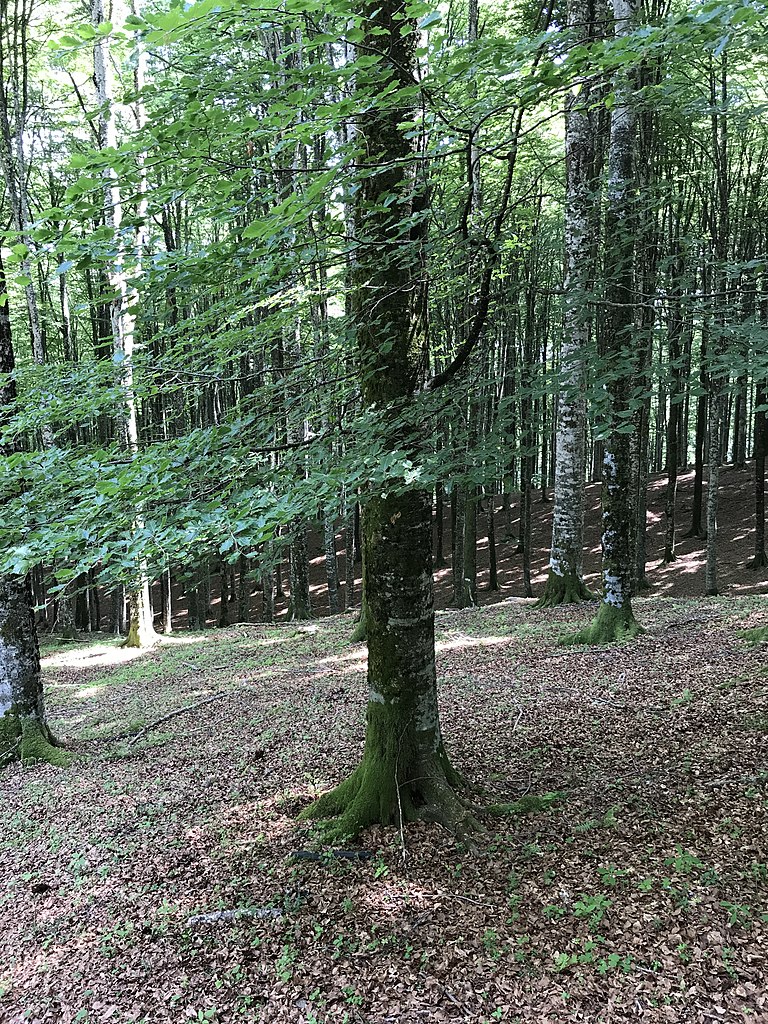
5. European beech – (Fagus sylvatica) The fruit of the European beech, called beechnut, is consumed by many bird species and is highly appreciated by the brown bear. It is one of the most popular horticultural trees and it has been cultivated in Europe over the last 150 years due to its rapid growth and benefits for the ecosystem. Source: WikimediaCommons/GooseCanada
5. European beech – (Fagus sylvatica)
The European beech (Fagus sylvatica) can be found in most central and western Europe: from the south of Sweden to central Spain and north of Portugal. It is a deciduous tree that can reach up to 40 metres tall. It enjoys cool and humid ambients, and can grow from sea level up to altitudes of 2,000 metres. The fruit of the European beech, called beechnut, is consumed by many bird species and is highly appreciated by the brown bear.
It is one of the most popular horticultural trees and it has been cultivated in Europe over the last 150 years due to its rapid growth and benefits for the ecosystem.
Beech forests, which usually grow with Perennial Quercus, have an interesting cycle for animals and landscape: in summer they provide shade to the species living under them, in autumn when the leaves start to fall, it creates an impressive landscape of yellow and red colours, and in winter the leaves that degrade on the ground provide the soil with rich organic material beneficial for microorganisms. An authentic recycling process of nature!
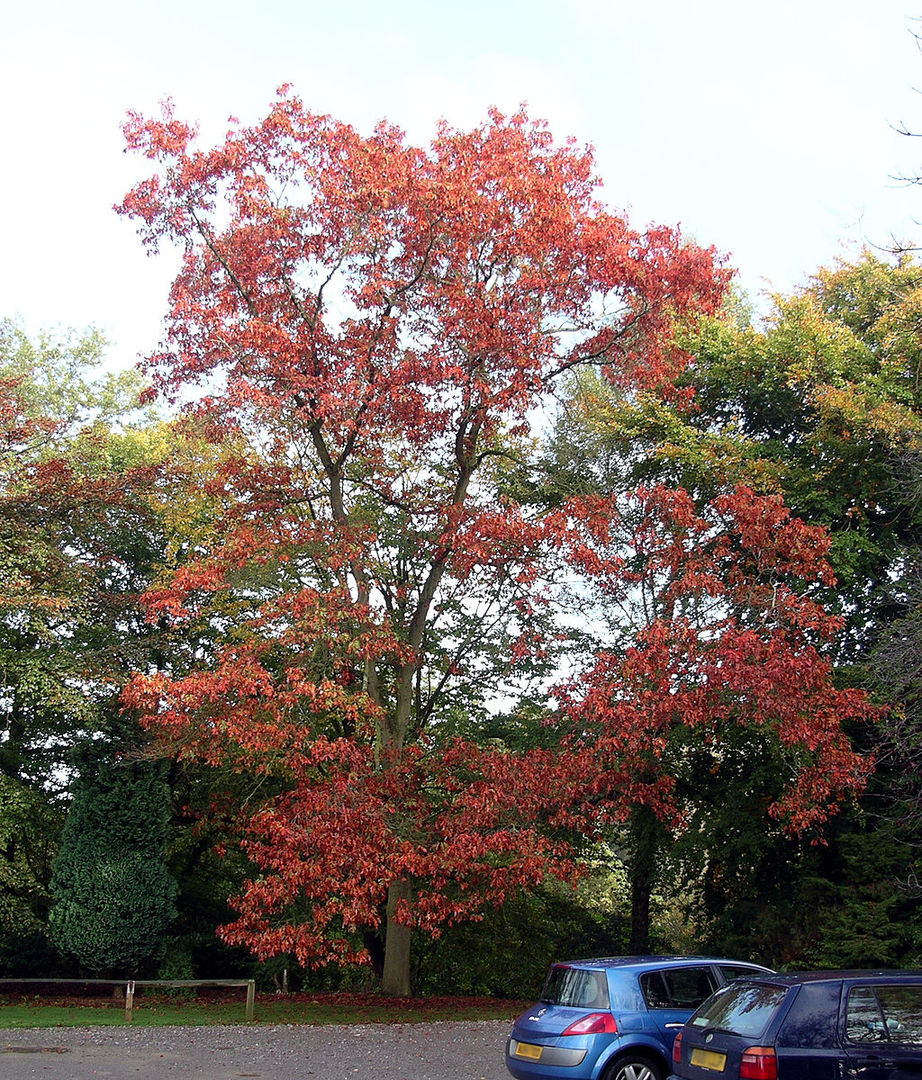
6. Northern red oak – (Quercus rubra) The Northern red oak is often cultivated for ornamental purposes, as even the leaves are green when they unfold, they become reddish or yellow-brown in autumn. Source: WikimediaCommons/Velela
6. Northern red oak – (Quercus rubra)
The Northern red oak (Quercus rubra) is a native tree to North America and the south of Canada. It is a deciduous tree that can reach around 30 metres tall. It was introduced to Europe in the XVIII century and has naturalised in western and central regions.
The Northern red oak is often cultivated for ornamental purposes, as even the leaves are green when they unfold, they become reddish or yellow-brown in autumn. Thus we find it in some city parks and gardens. So check for it in your nearest park next time!
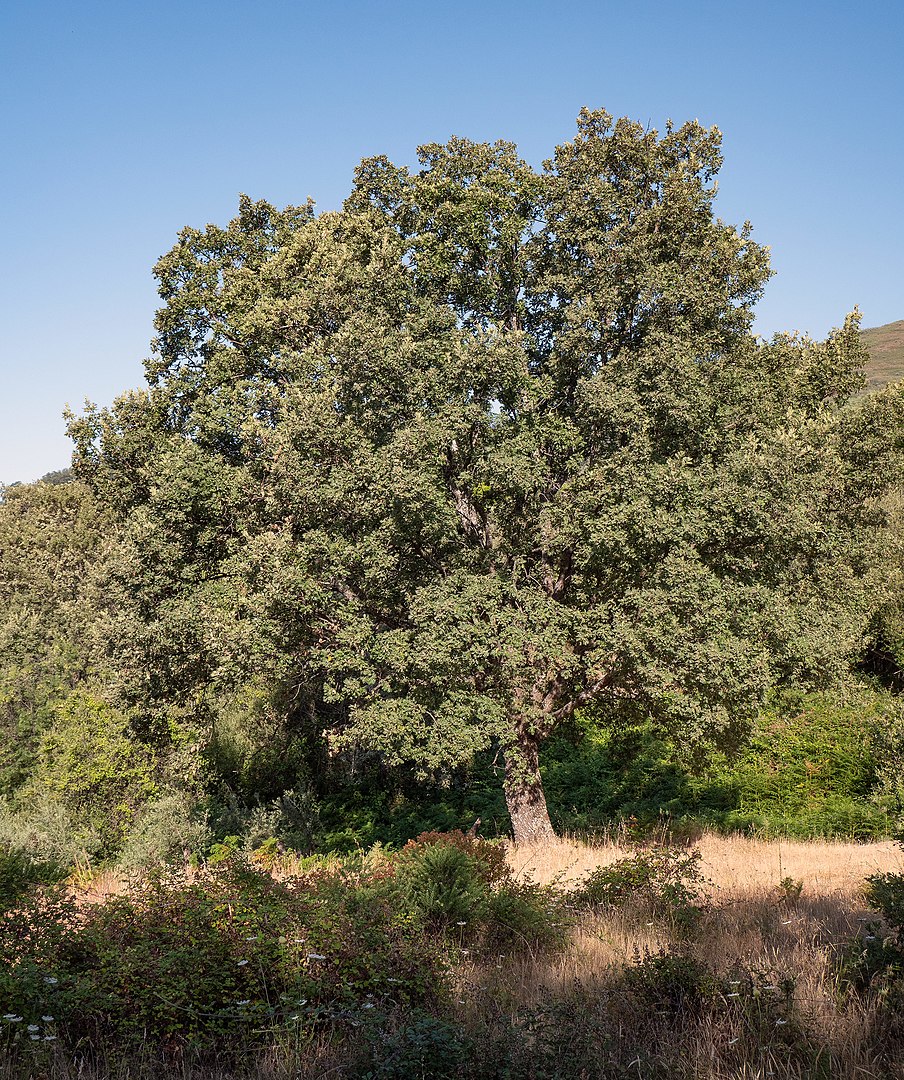
7. Pyrenean oak – (Quercus pyrenaica) These oaks grow 25-40 metres high and enjoy traditional importance in European culture due to their many utilities. Oaks offer important refuge for many animals and the importance of Pyrenean oaks for biodiversity has been underlined by their protection through European legislation. Source: By Luis Fernández García – Own work, CC BY-SA 4.0
7. Pyrenean oak – (Quercus pyrenaica)
Funnily enough, the Pyrenean oak (Quercus pyrenaica) is rarely found in the Pyrenees. It has this name due to a wrongly labeled sample in 18th century botanical research. This tree is found abundantly on the Iberian peninsula.
These oaks grow 25-40 metres high and enjoy traditional importance in European culture due to their many utilities. Oaks offer important refuge for many animals and the importance of Pyrenean oaks for biodiversity has been underlined by their protection through European legislation. If you spot one in Spring, when the leaves start to grow, stop for a second and feel them, it’s like touching velvet!
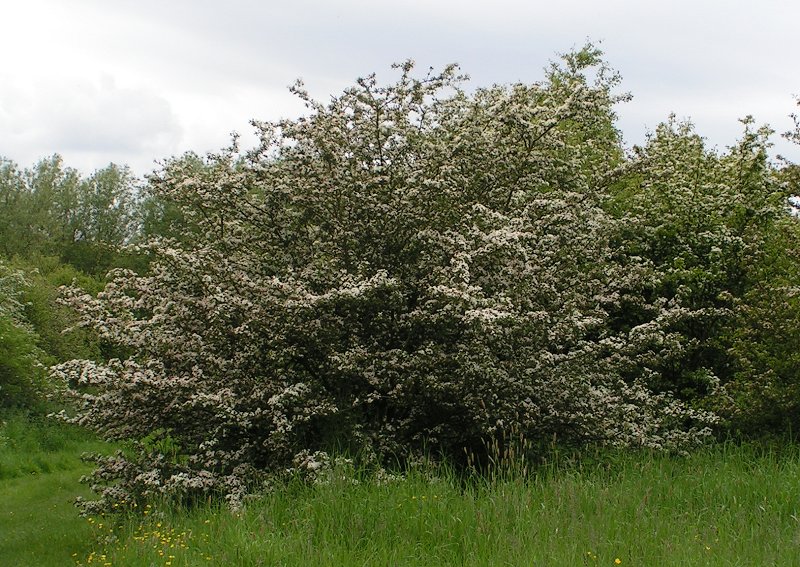
8. Common Hawthorn – (Crataegus monogyna) Common Hawthorns are a source of food for fauna in winter and shelter for small rodents and birds. The tree’s leaves look similar to parsley and become reddish-purple in autumn before falling. Source: WikimediaCommons/CC BY-SA 3.0
8. Common Hawthorn – (Crataegus monogyna)
The Common Hawthorn (Crataegus monogyna) can be found across all Europe and Northern Africa, due to its capability of adapting to different climates and soils. It is found in bushy habits, although it can also reach the size of a low tree.
Common Hawthorns are a source of food for fauna in winter and shelter for small rodents and birds. In Spring, when the Common hawthorn is in full bloom, it catches eyes with its magnificent white-flowered appearance, often cultivated just for ornamental reasons. These flowers also caught the attention of pollinators being a good source of nectar and pollen in Mediterranean areas.
The tree’s leaves look similar to parsley and become reddish-purple in autumn before falling. And, not only that, but Common hawthorns carry round, red berries which are rich in vitamin C and help regulate blood and nervous tension. Be careful though, these berries are only edible for animals or you will spend some days in the bathroom!
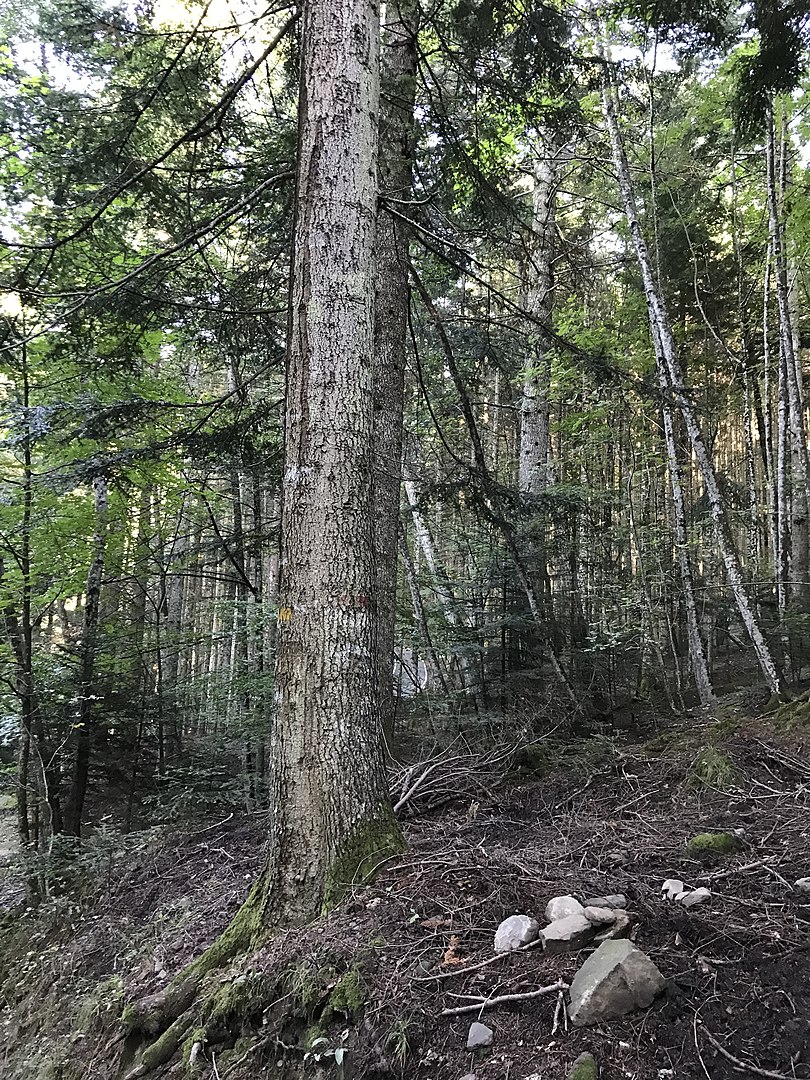
9. European Silver fir – (Abies alba) European Silver fir has been significantly reduced in the Iberian Peninsula, due to climate change and extended summers. It is a large, robust tree that in some exceptional cases can reach 50 meters tall. Source: By GooseCanada – Own work, CC BY-SA 4.0
9. European Silver fir – (Abies alba)
Another tree of the mountains! The European Silver fir (Abies alba) can be found in the mountains of central and southern Europe. It prefers deep, cool soils with shady areas, and it suffers in periods of long droughts.
This is why the European Silver fir has been significantly reduced in the Iberian Peninsula, due to climate change and extended summers.
It is a large, robust tree that in some exceptional cases can reach 50 meters tall. And also easy to recognise as its crown forms a pyramidal shape.
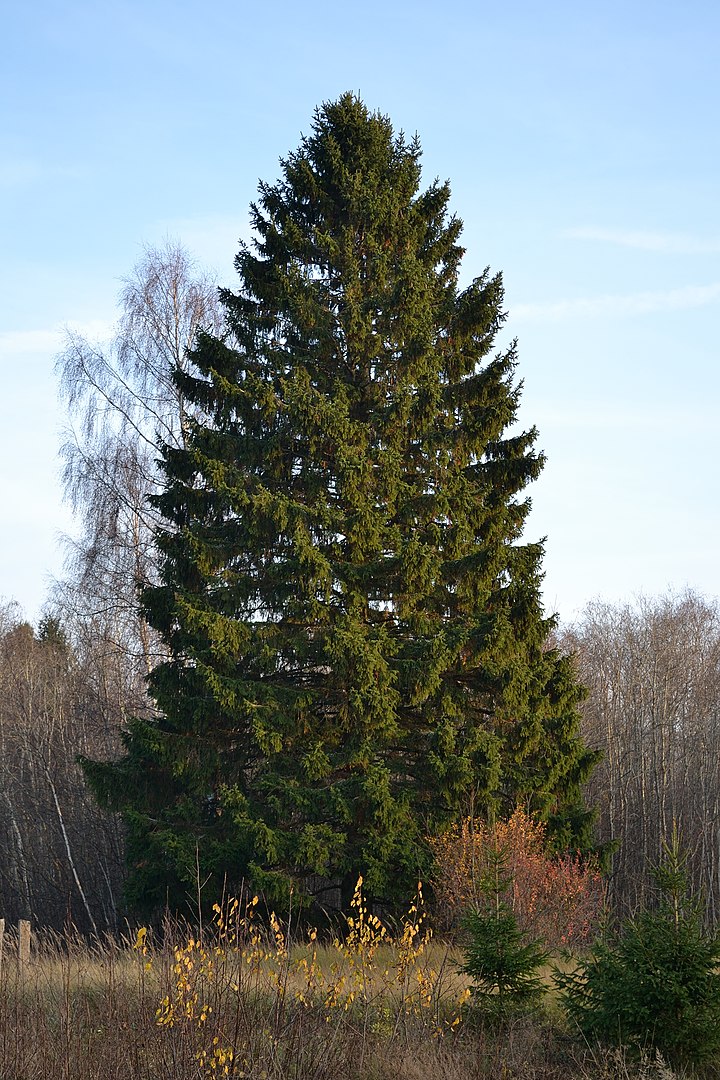
10. Norway spruce – (Picea abies) It is native to Europe and can grow up to 55 meters tall. The Norway spruce is an evergreen tree with short needle-like leaves. Source: By Ivar Leidus – Own work, CC BY-SA 3.0 ee
10. Norway spruce – (Picea abies)
And, last but not least, the “Christmas tree”! The Norway spruce (Picea abies) is used in many countries around the world as the festive tree, turning it into one of the most planted commercial spruces in Europe, especially in northern regions.
It is native to Europe and can grow up to 55 meters tall. The Norway spruce is an evergreen tree with short needle-like leaves.
These are Life Terra’s 10 most planted trees during our last planting season
We hope you were able to learn something new and will start looking out for them when wandering through nature the next time!
Life Terra is a foundation with a mission to enable people to take impactful climate action now. We facilitate tree planting, educate future generations, and develop tree monitoring technology.
Life Terra is founded on the knowledge that tree planting is regarded as the most cost-effective nature-based solution to capture carbon. As part of a multi-faceted mitigation strategy, planting trees can play an important role in the fight against climate change and the devastation it causes (heat waves, drought, forest loss, desertification, erosion, flooding).
Life Terra seeks to bring people together to plant 500 million in Europe, harnessing and monitoring nature’s own carbon capture mechanism and enabling citizens to take urgent action against the climate crisis.
Life Terra is one of Europe’s largest climate action initiatives. It brings together 15 experienced organisations from 8 countries and is led by the newly established Life Terra foundation. This project was awarded €7 million support by the Life Programme, which the consortium will use as seed money to put this initiative on the map.
More information about the Life project can be found under Actions and Expected results.
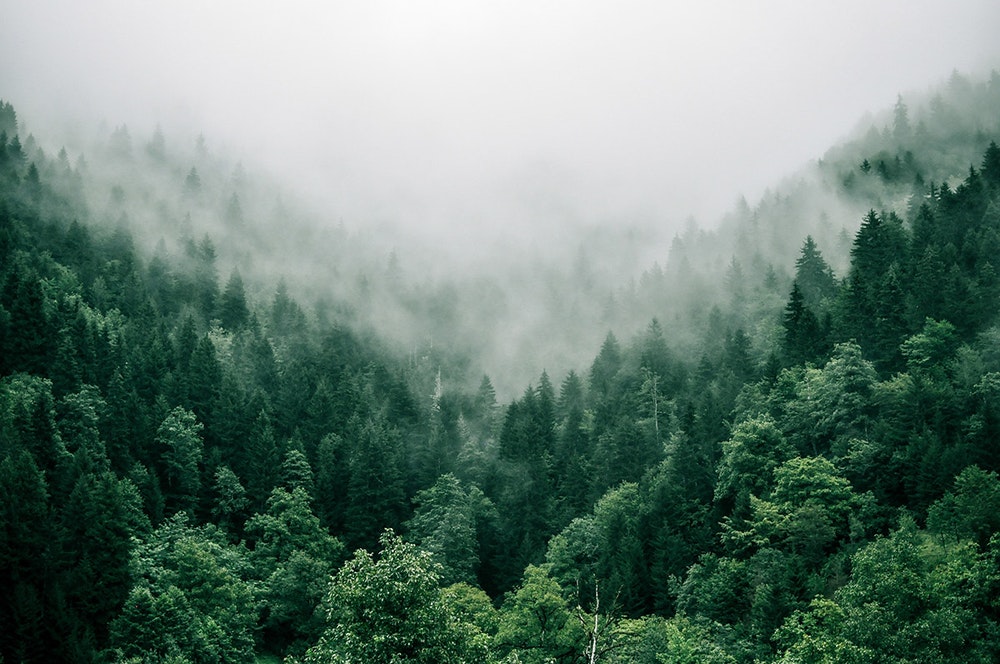
500 million trees in Europe! Life Terra is a foundation with a mission to enable people to take impactful climate action now. We facilitate tree planting, educate future generations, and develop tree monitoring technology. Source: LifeTerra

